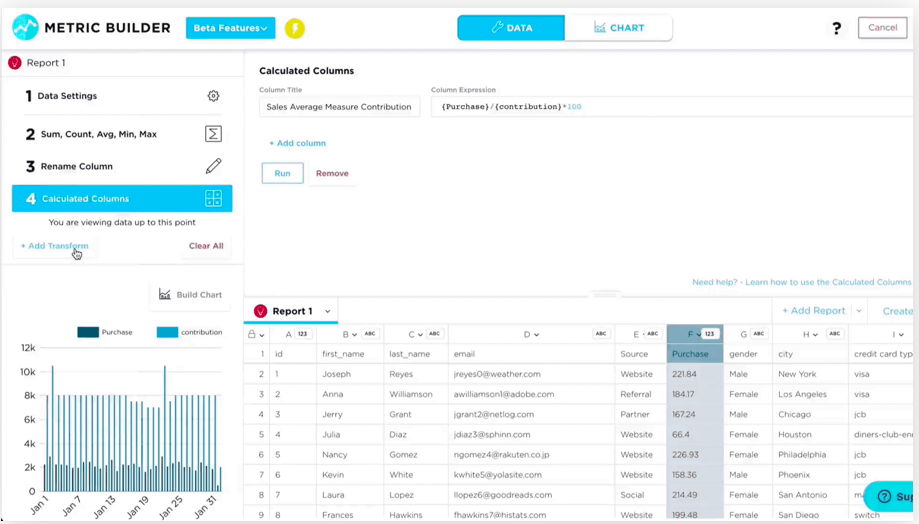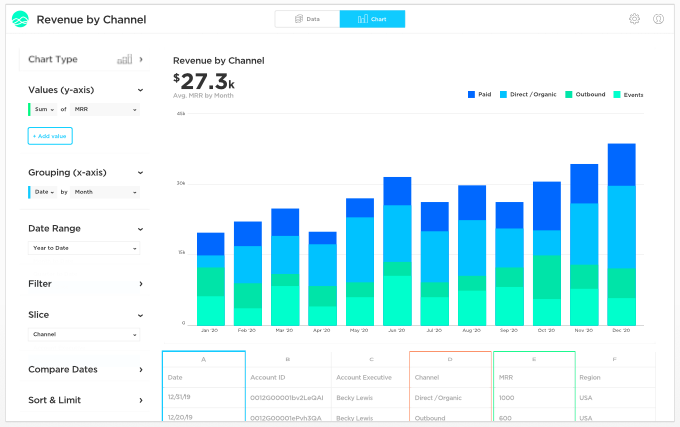Here's how to integrate your raw data and build a solid data stack. We'll explain all the ins and outs of the technical components of the Business Intelligence platforms.
Why Is Proper BI Data Stacking Important?
Data is a goldmine of information that business teams can use if they properly consume it. How can data teams make sense of the data and effectively use it to add value if it isn't organized?
We have a solution: build a data stack as your Business Intelligence framework. A complete stack has all the hardware and software needed for a specific part of the process, like gathering, storing, and analyzing Business Intelligence (BI) data. So that data can be visualized and analyzed, this architecture gives the many technologies that make it up a uniform base. Data is only helpful to business users once the stack is in place.
How Should You Set Up Your Business Intelligence Data Stack?
Let's look at the various technical components of a BI data stack.
1. Data Sources
Before data can be converted and turned into something useful, it needs to be gathered and put in one place. Access data from various databases, CRM/ERP systems, files, APIs, and platforms such as Google Analytics and Hubspot. This is where the data has already been put in, making it an important starting point.

2. Integrations
Native integrations can set up a direct link to the most popular platforms, databases, and CRMs so that data can be imported smoothly and consistently using APIs that continuously import and update data. This ensures that your metrics are always accurate and up-to-date, which is essential when making crucial business decisions.
3. Data Storage/Data Warehousing
Using the ETL procedure, the data is kept in a data warehouse, a central location for processing, storing, and cleaning data. Your BI projects will only work if you have a data warehouse that can keep up with rising demand and expand as needed.
(Grow imports your business-critical data and keeps the most relevant and current data on hand, so you don’t need a third-party data warehouse).

4. Transformation/ETL
The job of the data warehouse is to turn raw data into usable business information. When data is imported, it can be easily prepared, cleansed, and ready to use. This means that a mix of data sources can power metrics and dashboards.
Let's look at these two types of transformations, where Grow's BI platform can help you cut through data roadblocks:
- SQL Transformations: Data tables are transformed by writing custom codes in advanced query languages such as PostgreSQL
- Non-SQL Transformations: Pre-built SQL codes are available to perform specific functions in Business Intelligence reporting tools. Such as Renaming columns or Filtering data.

5. Data Analysis
To put it another way, data analysis is the process that lets people who aren't tech-savvy use data stored in a warehouse. The data is processed and displayed using the right tools (like charts, dashboards, and graphs) so that business teams can start to figure out what it all means.
Self-service Business Intelligence platforms take this process to the next level in terms of user-friendliness and ease of use, with features that help people quickly sort through their data and show it in clear, meaningful ways.

Take-Away:
Engineer your BI Data Stack With The Top BI Tools As Per Capterra
An integrated, easy-to-use platform such as Grow is the best way to ensure that data can be merged and viewed without any trouble by both data and business teams.
Grow's Business Intelligence platforms are the best place for your BI data stack if you want to have it easier than most. Fuel data Grow's way!







